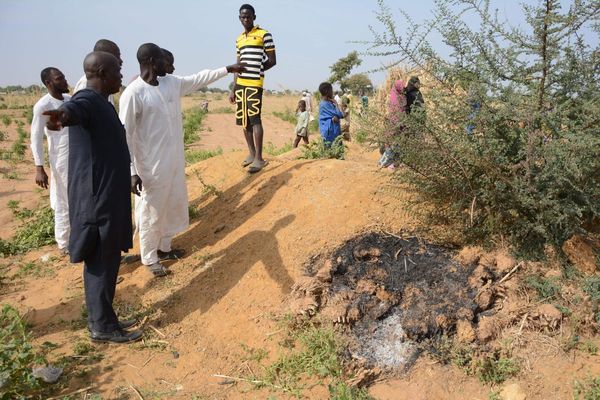
March ICE NY cocoa (CCH25) today is up +1,193 (+11.78%), and March ICE London cocoa #7 (CAH25) is up +997 (+12.28%).
Cocoa prices today are soaring on crop production concerns in West Africa. Some Ivory Coast and Nigerian cocoa farmers reported that cocoa trees are beginning to suffer the effects of the seasonal dry and dusty Harmattan winds, with leaves turning yellow and the cherelles (cocoa pods) withering.
On December 18, NY Cocoa posted an all-time nearest-futures high, and London Cocoa posted an 8-month nearest-futures high on the deterioration of the West African cocoa mid-crop outlook. Maxar Technologies warned that dry conditions in West Africa will hurt the early development of the mid-year cocoa crop harvested in April and that the arrival of the seasonal Harmattan winds could worsen the situation.
Shrinking global cocoa stockpiles are also bullish for prices. ICE-monitored cocoa inventories held in US ports have been trending lower for the past 1-1/2 years and fell to a 20-year low last Friday of 1,367,084 bags.
On the bullish side, Ghana on December 20 reduced its 2024/25 (Sep-Aug) cocoa harvest forecast by -5% due to weather concerns, which was the second downward revision for the season.
In a bullish factor, the International Cocoa Association (ICCO) on November 22 raised its 2023/24 global cocoa deficit estimate to -478,000 MT from May's -462,000 MT, the largest deficit in over 60 years. ICCO also cut its 2023/24 cocoa production estimate to 4.380 MMT from May's 4.461 MMT, down -13.1% y/y. ICCO projected a 2023/24 global cocoa stocks/grindings ratio of 27.0%, a 46-year low.
Heavy rain in West Africa has led to reports of high mortality rates of cocoa buds on trees and pushed cocoa prices sharply higher. Heavy rain in the Ivory Coast has also flooded fields, increased disease risk, and affected crop quality. Recently harvested cocoa beans from the Ivory Coast signal lower quality, with counts of about 105 beans per 100 grams. The Ivory Coast cocoa regulator allows exporters to buy bean counts of 80 to 100 or slightly more for every 100 grams, with the best quality cocoa having the lower count.
News of continued high cocoa shipments by farmers in the Ivory Coast, the world's largest producer, is bearish for cocoa prices. Government data today showed that Ivory Coast farmers shipped 1.05 MMT of cocoa to ports from October 1 to December 29, up +27% from 824,730 MT shipped the same time last year.
Stronger cocoa exports from Nigeria, the world's sixth-largest producer, are also bearish for prices. Nigeria's Nov cocoa exports rose +35% y/y to 38,015 MT.
On the negative side, the Ivory Coast regulator Le Conseil Cafe-Cacao on October 18 raised its Ivory Coast 2024/25 cocoa production estimate to a range of 2.1-2.2 MMT from a June forecast of 2.0 MMT.
Recent global cocoa demand news was mixed. The National Confectioners Association on October 17 reported that North American Q3 cocoa grindings rose +12% y/y to 109,264 MT. Also, the Cocoa Association of Asia reported that Q3 Asian cocoa grinding rose +2.6% y/y to 216,998 MT. However, the European Cocoa Association reported that European Q3 cocoa grindings fell -3.3% y/y to 354,335 MT.
Cocoa found support after Ghana's Cocoa Board (Cocobod) on August 20 cut its 2024/25 Ghana cocoa production estimate to 650,000 MT from a June forecast of 700,000 MT. Due to bad weather and crop disease, Ghana's 2023/24 coca harvest sank to a 23-year low of 425,000 MT. Ghana is the world's second-biggest cocoa producer.







